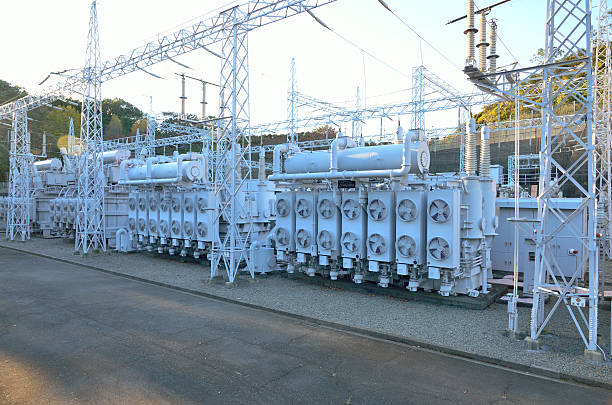What is meant by a 480V to 120V transformer?
An electrical device that lowers the incoming high-voltage electricity (480V) to a lower, more usable voltage (120V) is called a 480V to 120V transformer , or a high voltage to low voltage transformer (particularly in this case). This enables you to use the easily accessible 480V power supply, which is frequently found in industrial settings or building sites, to power products meant for 120V circuits.
This is an overview of its features:
- 480V is the input voltage, which is high for the majority of equipment.
- 120V is the standard voltage for many home appliances as the output voltage.
By transforming the high-voltage electricity into a form that can be used by your 120V appliances, the transformer effectively serves as a bridge. This is crucial because utilizing 480V with an item meant for 120V might harm it or potentially endanger your safety.
Choosing the Right Transformer: Specifying Your Needs
In the field of electricity, voltage is everything. Some appliances require the more moderate voltages often found in houses (120V), while others thrive on the strong power offered by high voltages (480V). This is when the 480v to 120v high voltage to low voltage transformer, which serves as a bridge between these two electrical realities, comes into play. When choosing a 480v to 120v transformer , it’s important to carefully examine the following factors:
- KVA Rating:
Align the transformer’s KVA rating with the power consumption of the appliance. A larger KVA rating guarantees that the transformer can withstand any spikes in power consumption, acting as a safety buffer.
- Phase:
Depending on your application and the available power source, decide if you need a single-phase or three-phase transformer. While three-phase transformers are more frequently used in industrial settings, single-phase transformers are adequate for the majority of household uses.
- Features for Safety:
For peace of mind, look for transformers with integrated safety features like overload protection and UL listing. Overload protection protects the transformer from harm brought on by an excessive current demand, and UL listing denotes adherence to Underwriters Laboratories safety regulations.

480v to 120v transformer for appliances: Where 480v to 120v Transformer?
Transformers that convert 480 V to 120 V serve a wide variety of uses. Here are a few well-known instances:
- Building Sites: A lot of tools and equipment used on building sites run on 120V, therefore the easily accessible 480V power supply needs to be converted using transformers.
- Industrial Settings: Transformers are often needed to scale down the greater voltage frequently employed in these settings since some industrial control systems or specialized machines may demand 120V electricity.
- Appliance Use: In rare instances, an industrial environment with only 480V electricity available may include a 120V appliance. This gap is filled by a transformer, which enables the device to operate as intended.
Understanding the specific Key Terms Explained:
Let’s first define a few basic concepts to create a shared understanding before getting into the details:
- Step-Down Transformer: As its name implies, this transformer lowers the incoming high voltage (480V) to a workable lower voltage (120V) so that suitable appliances may be powered.
- Kilo-Volt-Ampere (KVA) Rating: This indicates the transformer’s capability to handle power. To make sure your transformer can supply the appliance’s power needs without overloading, it’s critical to select the appropriate KVA rating.
- Single-Phase Transformer: These transformers, which manage a single alternating current (AC) circuit, are most frequently seen in domestic settings.
- Three-Phase Transformer: To control three independent AC circuits and increase power capacity, three-phase transformers are frequently used in industrial settings.
- Dry-Type Transformers: Because they require less maintenance and are easier to install, these air-cooled transformers are a popular option.
Here are some things to keep in mind for safety:
- Leave it to the Experts: If you don’t have a lot of electrical experience and credentials, don’t try to install or fix a 480v transformer on your own.
- Double-check the Voltage: Before attaching the transformer to a power source or appliance, be sure the input and output voltages are correct.
- Grounding Is Crucial: To avoid electrical risks, make sure the transformer is properly grounded.
Electrical safety with 480v transformers: Essential Safeguards
It might be risky to work with electricity that is a high voltage (480V). When installing and maintaining of 480v to 120v transformer , it’s imperative to put safety first and always seek the advice of a licensed electrician. Never forget to put safety first while working with 480-volt transformers. Here are several important precautions:
- Leave it to the Experts:
Only licensed electricians with the necessary education and expertise should install, maintain, and troubleshoot 480v transformers. Their knowledge reduces the possibility of mishaps and guarantees compliance with safety regulations.
- Equipment for personal protection (PPE):
When working with 480v systems, qualified electricians are required to wear protective equipment (PPE) such as flame-resistant clothes, safety glasses, and insulated gloves. They are more protected from burns, arc flash, and electrical shock thanks to this PPE.
- Lockout/Tagout Procedures:
Strict adherence to lockout/tagout protocols is required before performing any work on a 480v transformer. This helps to prevent unintentional energization during maintenance by guaranteeing that the power supply is separated and de-energized.
- Visual Inspection:
A trained electrician should do routine visual inspections of the transformer to spot any issues such as loose connections, broken wiring, or overheating. Early discovery avoids further problems and enables prompt fixes.
- Grounding is Crucial:
The transformer must be properly grounded to ensure safety. By allowing any stray current to safely travel to earth, a grounded transformer lowers the possibility of an electrical shock.
Conclusion:
Shinenergy is a committed supplier of transformers and other high-quality electrical equipment. To meet the needs of diverse applications, we provide an extensive range of 480v to 120v transformer . Our experienced staff can help you select the ideal transformer for your unique requirements.

